The absolute coolest bean that you have never heard of, or maybe you have! Lupini Beans are a legume that looks similar to a lima bean, but has a sturdier texture than other beans. These nut-like beans belong on all of your charcuterie boards, and in your gym bag as a high-protein snack! Read on for how to make and store them properly.
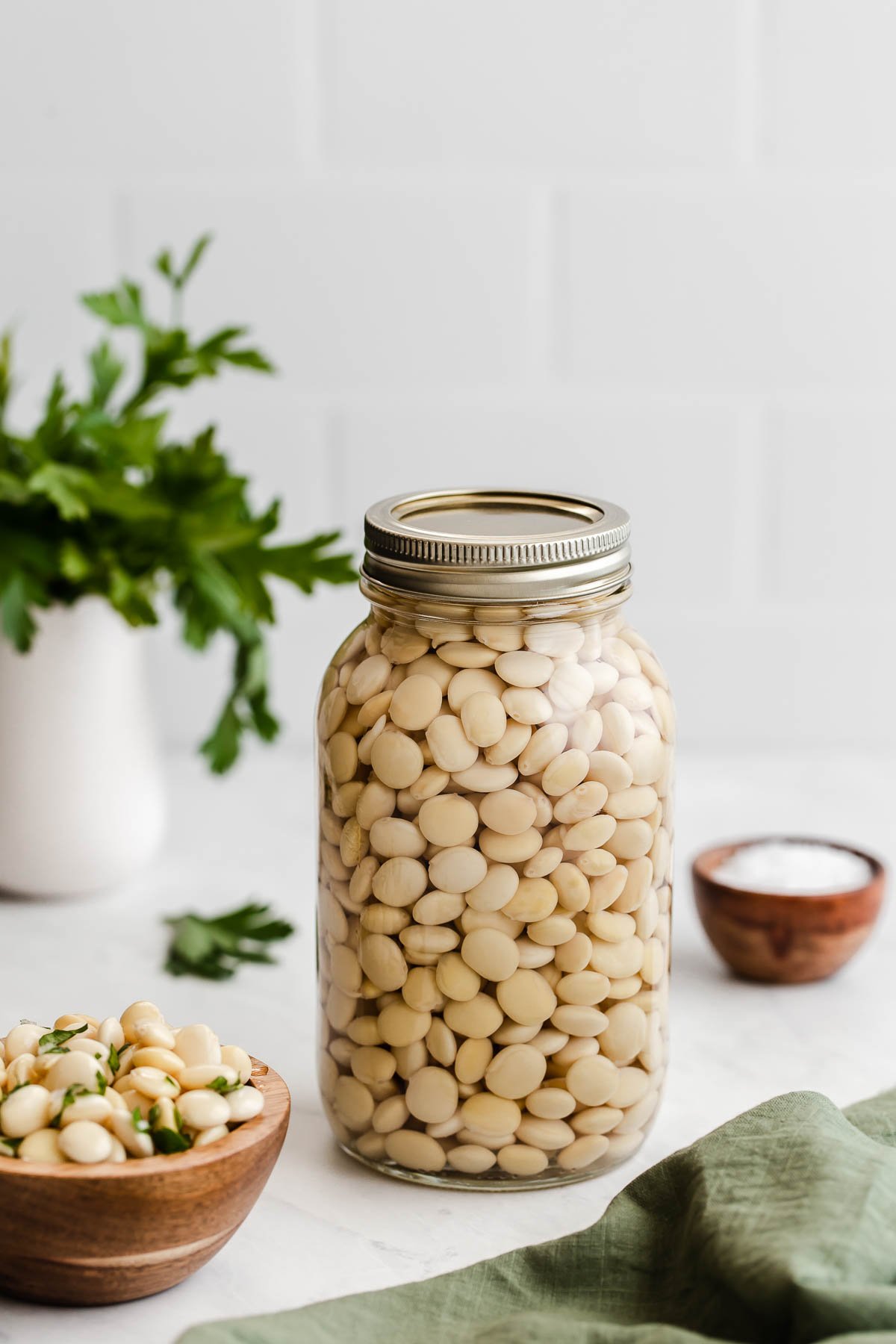
Lupini Bean Recipe
The first time I ate lupini beans, I almost ate them the wrong way! I was at a friend's house, and they were part of a large serving board with lots of other Middle Eastern dishes. Always a bean lover, I spied these plump, lucious-looking yellow beans in a bowl that looked like they had been coated in olive oil and dusted with a brown spice. Everyone was using a spoon to scoop up handfuls, and I proceeded to the do the same. Thank goodness someone stopped me and showed me how to eat them properly!
Typically, lupini beans are popped out of the skins before eating. My friend instructed me on how to bite a small hole in the outer skin, and then slip the softer portion of the lupini bean out of the skin for eating. At first taste, I have a new favorite bean!
If you've never had lthem, the texture feels like a cross between a bean and a nut. They are more dense than any canned bean I have had, and they are also absolutely delicious and filling! Typically, they are found in Mediterranean dishes, on Peruvian or Ecuadorian tables (chochos!), as a Middle Eastern snack, and as a street food in parts of northern Africa. So many people are eating them, so you should be, too!
What are lupini beans?
Lupini beans are part of the legume family, closest to peas. All beans are legumes, but not all legumes are beans. For example, black beans, white beans, soybeans, and lupini beans are all legumes. But, peanuts, lentils and peas are also legumes, but we don't consider them beans!
Technically, lupini beans are traced back to the Middle East, and most likely, Ancient Rome cultivated them throughout many regions. Lupini beans are actually super bitter, unless they are soaked properly and cooked fully. There is a subvariety called 'chochos' that is native to Andean Mountains. Chochos are a popular snack in Peru and Ecuador, and you can use this recipe to prepare chochos also.
All lupini beans must be soaked for a minimum of 4 days (and up to 7 days), and they all require a 20 minute hard boil to be considered safe to consume.
There are two types of lupini beans: sweet lupines and bitter lupines. These days, it's almost impossible to find the bitter variety. Most dry lupini beans you find are the sweet variety, even if they're not marked 'sweet'. The bitter variety takes up to 2 weeks to soak, while the sweet variety only takes a few days. You'll know you have the sweet variety if they start to lose their bitterness after 4 days of soaking. I order my lupini beans online here.
While this recipe takes nearly one week to make (yes, you read that right), the result is two quarts of homemade lupini beans made from dried beans that you can snack on anytime you like!
Benefits of Lupini Beans
Like all beans, lupini beans are rich in micronutrients and plant-based protein. The specific benefits of lupini beans include: high amounts of calcium, B vitamins, and iron.
Lupini Bean Ingredients
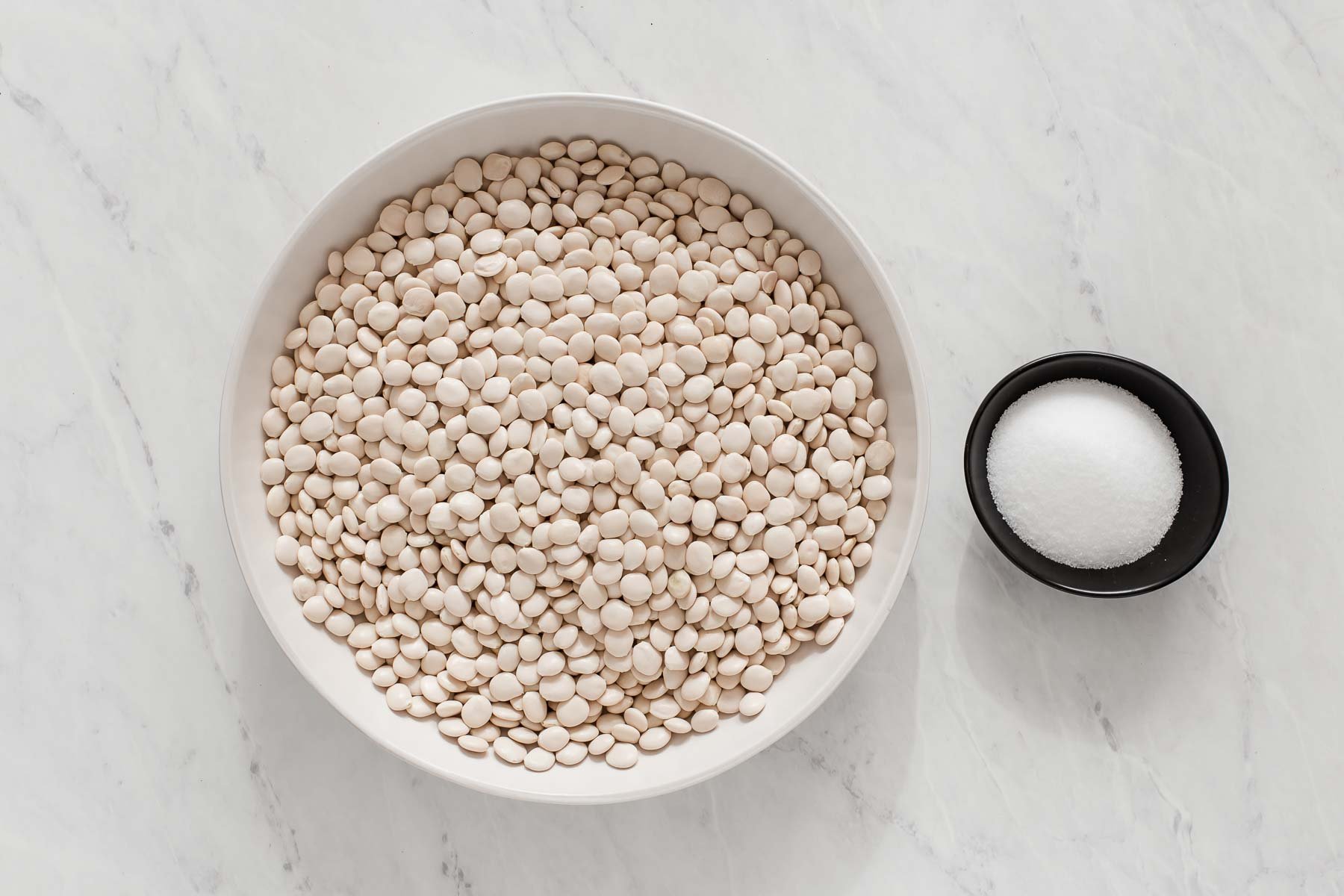
- Lupini Beans. It can be very hard to locate dry lupini beans, unless you're shopping in a market that has a high selection of Mediterranean or Middle Eastern food. And even then, most of the time, lupini beans are sold already cooked and marinated in a clear glass jar. Those are delicious and completely ready-to-eat, but this recipe today is for making them from scratch when they're dry. You can buy dried lupini beans online here.
- Salt. We will be soaking and brining, so we will need lots and lots of salt. About 9 teaspoons of it, plus maybe more to taste for storing. Please note that most of the salt will be used in the soaking/ bringing process, and then drained away. The final dish is not overly salty.
How to Cook Lupini Beans
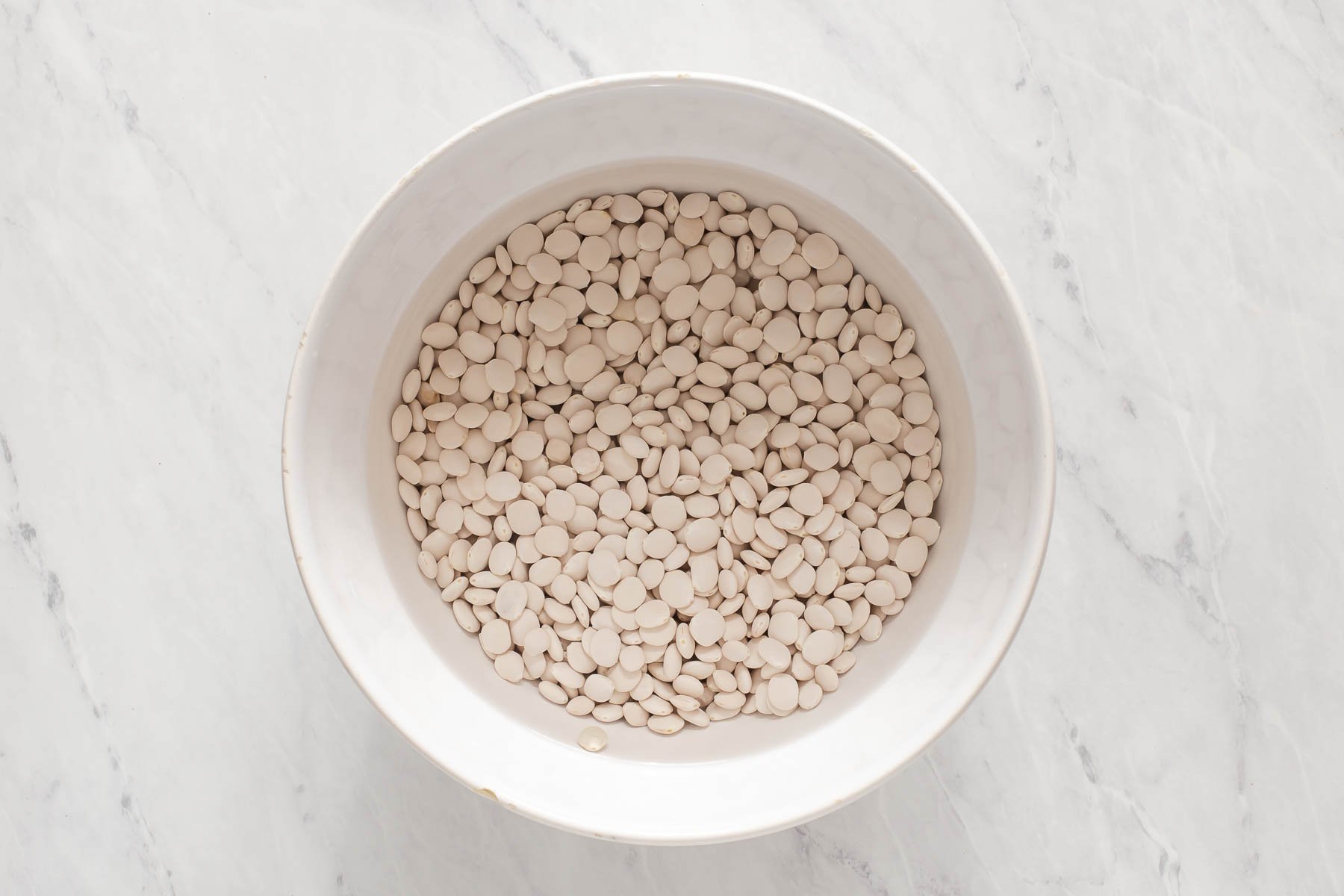
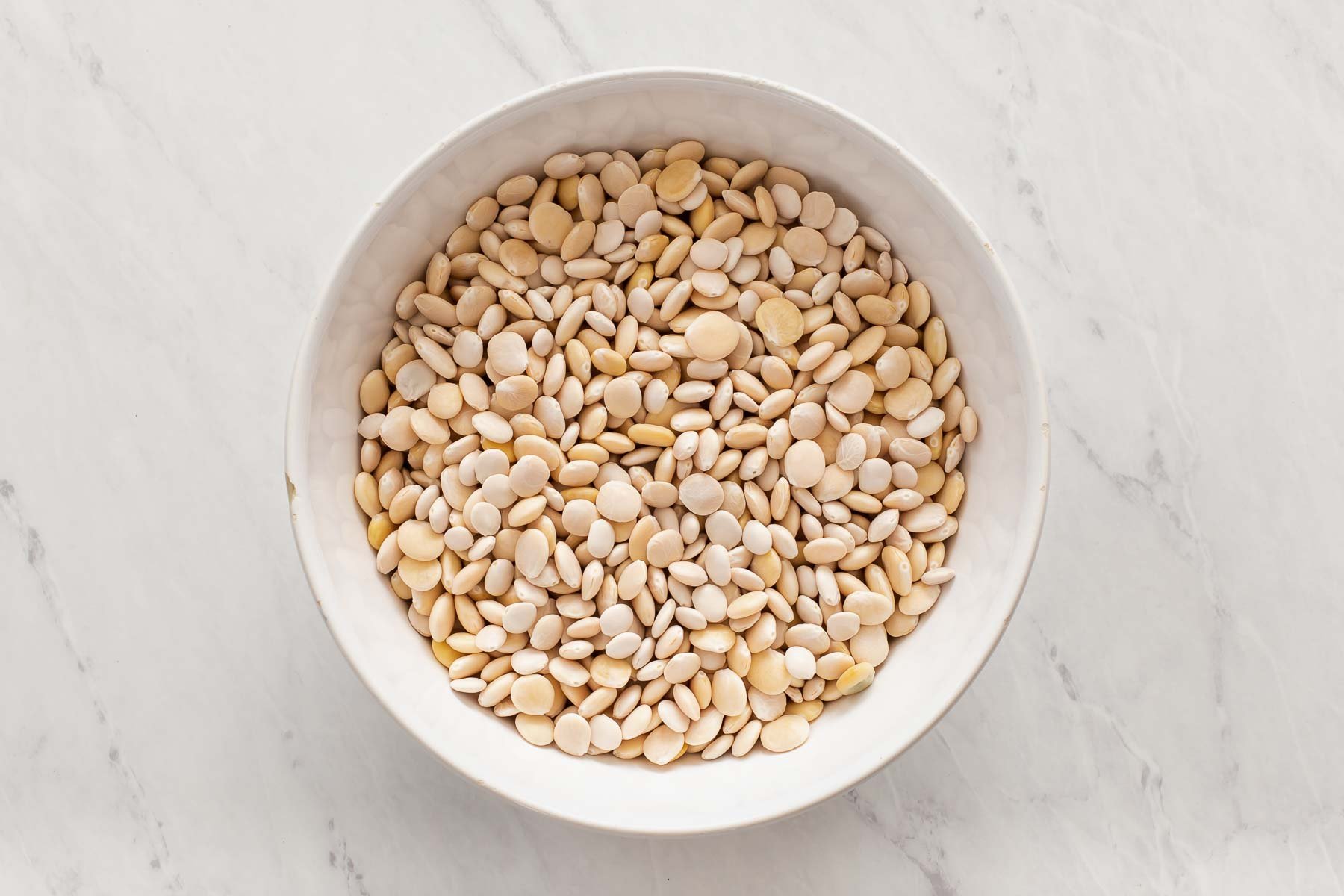
- First, rinse one pound of dry lupini beans, and pick out any broken or cracked ones.
- Soak them in plenty of fresh cool water for a full 24 hours, not just overnight.
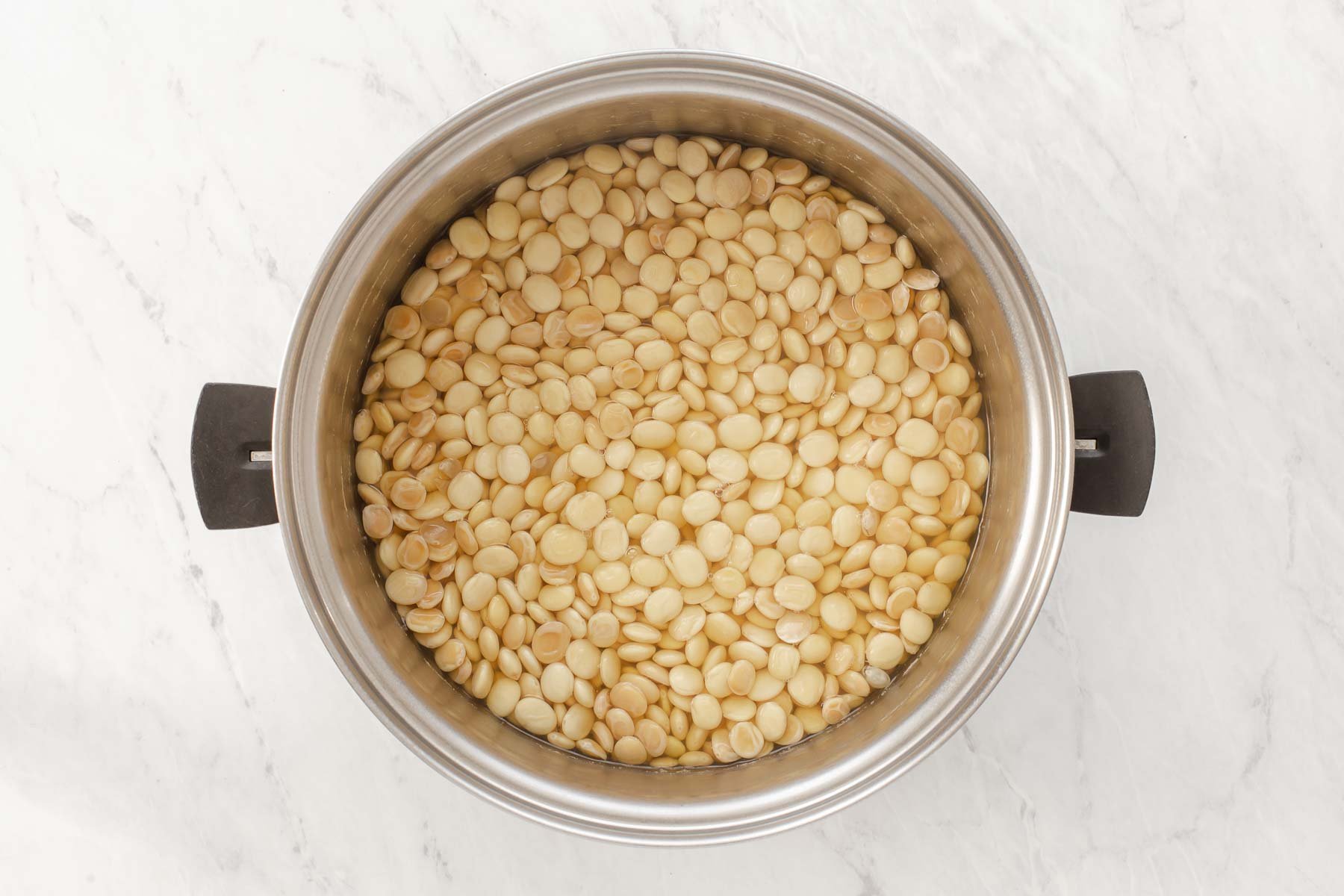
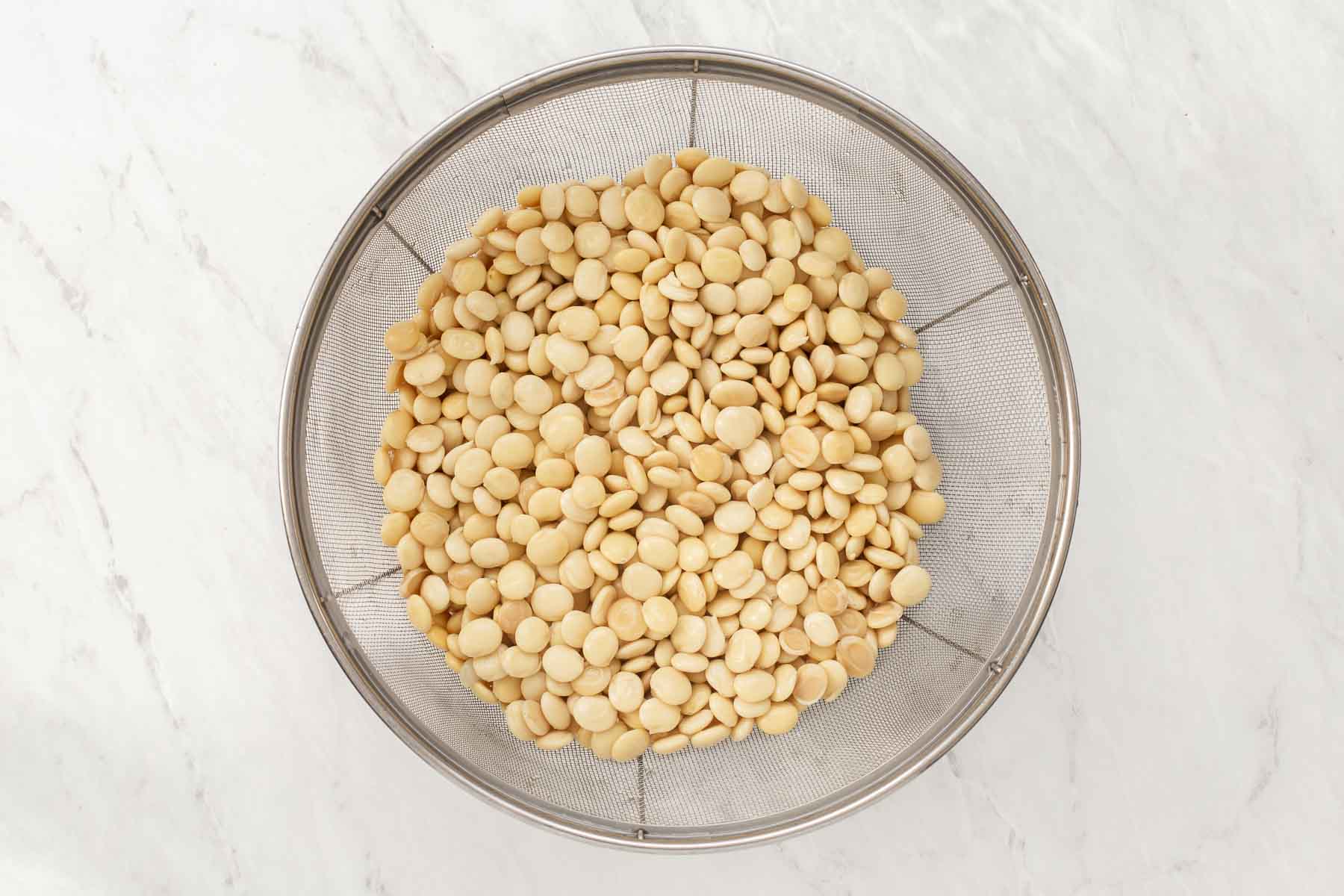
- Drain the lupini beans and place them in a deep pot. Cover with several inches of cool water, and bring to a boil. Keep at a rolling boil for 60 minutes. They are very sturdy and will not split.
- Drain them and let them cool. Then, place them in a large bowl and cover with cool water. Every morning and every night, drain the beans and cover with fresh cool water. You will do this twice a day for at least 4 days (or until the beans have no bitter taste left in them. It might take up to 7 days, depending on your beans). During the morning soak only, add 1 teaspoon of salt to the soaking water.
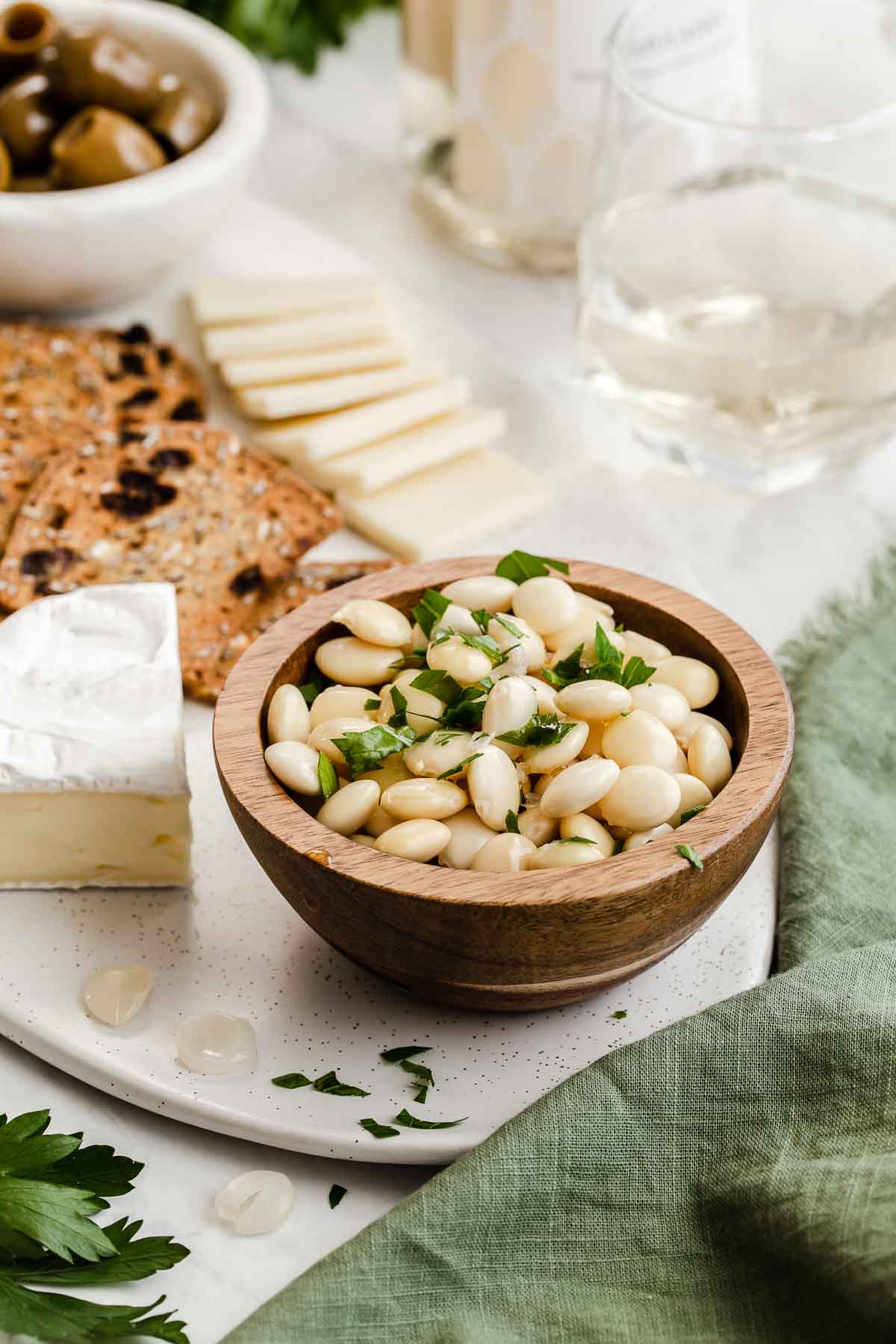
Once the beans are no longer bitter (pinch off the outer layer and taste several beans) after at least 4 days and up to 7 days, you can place them in clean salted water and store in the fridge for up to 2 weeks without any need to soak and drain again. I add one teaspoon of salt to each jar at this point. This recipe fills 2 quart-size mason jars.
How to Serve Lupini
Remember that the best way to eat these is to peel off the outer skin. You can technically eat the skins, but most people prefer not to. Use your teeth to tear a small hole in the outer layer, and the skin will slip right off!
I like to serve these in a small bowl, drizzled with olive oil, a sprinkle of salt and fresh chopped herbs (rosemary or parsley). You can also serve them wish a squeeze of lime juice and cumin. They're delicious Mediterranean style, mixed in a bowl with different types of olives, too. In Ecuador, I have seen them peeled and treated like ceviche, making a vegan ceviche! Check out my other vegan bean recipes here.
Why Lupini Beans are Gaining Popularity:
Finally, today, we're seeing snack bags of pre-made lupini beans in health food stores that have been flavored with salt, rosemary or even ground cumin and lime. In my opinion, the nutritional benefits are the reason for the sudden rise to fame in your favorite natural grocery store. I admit that I love the pre-packaged ones, especially on the go as a high-protein snack that is easier to eat than hummus.
Lupini beans are a high-quality source of plant based protein, and contain high levels of zinc and magnesium. Check the nutrition box at the bottom of the recipe card for full information.
How to store this Lupini Beans Recipe
Lupini beans prepared with this method are good in the fridge for up to 2 weeks in their salt water brine.
Lupini FAQs
The best way to eat these is to peel off the outer skin. You can technically eat the skins, but most people prefer not to. Use your teeth to tear a small hole in the outer layer, and the skin will slip right off!
Yes, it is okay to eat them, but they are very tough.
This recipe calls for 4-7 days of soaking and changing salt water after the cooking process. This ensures your beans will not be bitter.
Yes, lupini beans sold in a jar are fully processed and ready for consumption. They have been fully cooked and soaked in salt water before the canning process in the jar.
More like this Lupini Beans Recipe
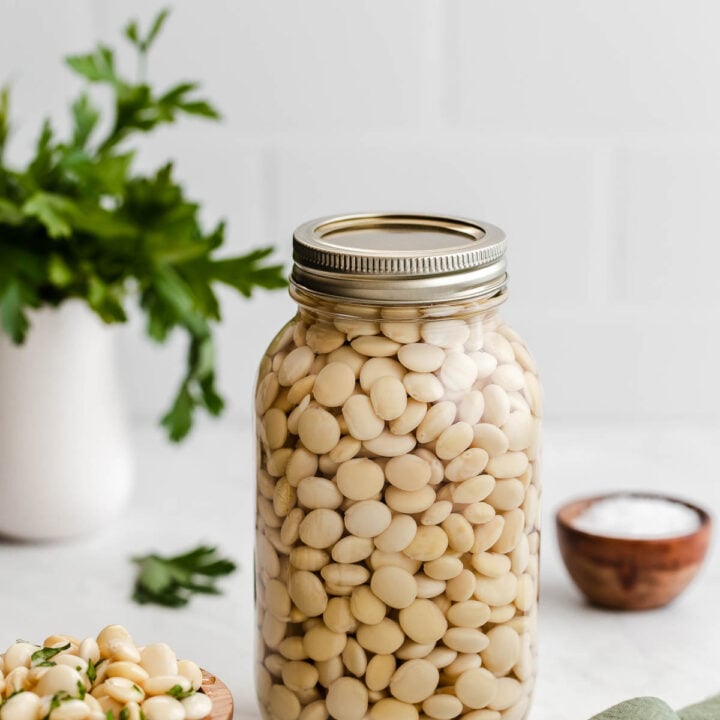
Lupini
Homemade lupini beans from scratch. From dry beans to 2 quarts of ready to eat beans, in just 1 week.
Ingredients
- 1 pound dried lupini beans
- 9 teaspoons salt, plus more to taste
Instructions
- Rinse lupini beans, and pick out any broken or cracked beans. Soak lupini beans for 24 hours. (Not just overnight).
- Drain the beans, and place them in a deep pot. Cover with several inches of cool water, and bring to a boil.
- Keep the beans at a full boil for 60 minutes.
- Drain the beans and let cool.
- Place the beans in a large bowl, and cover with cool water.
Every morning and every night, drain the beans and cover with more cool water. You will do this twice a day for at least 4 days (or up to 7 days, until the beans have no bitter taste left in them). During the morning soak only, add 1 teaspoon of salt to the soaking water. Do not add salt for the evening soak. - Once the beans are no longer bitter (pinch off the outer layer and taste several beans), you can place them in clean salted water (2 teaspoons for the whole batch) and store in the fridge for up to 2 weeks without any need to soak and drain again. This recipe fills 2 quart-size mason jars with beans.
Nutrition Information:
Yield: 12 Serving Size: 1Amount Per Serving: Calories: 45Total Fat: 1gSaturated Fat: 0gTrans Fat: 0gUnsaturated Fat: 1gCholesterol: 0mgSodium: 1588mgCarbohydrates: 4gFiber: 1gSugar: 0gProtein: 6g




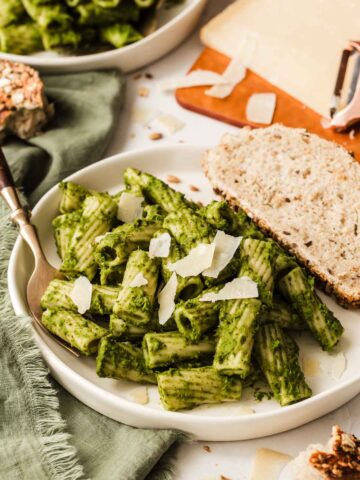

denise
So funny as you really don't see many recipe for Lupini Beans. I first heard of them when visiting Lenny's family in Boston. This bean is huge with the Portuguese community too. He LOVES them! I could take them or leave them to be honest. I should try to find some dry ones, and surprise him with your recipe.
Sue
My Italian family made them every year to eat during the Our Lady of Mount Carmel feast. We love them! It's been a few years since I made them, so I thought I'd refresh myself on how to do it. Your recipe is exactly what I remember!
Lucille
Lovely blog! Glad I found it!
Wendy Henderson
Can you can these beans and if so how please?
Ericka W
I would like to know this, as well. I have some lupini beans that will be ready in a few days. Anyone have any advice?
Karla
I'm so excited I found this recipe.
My chochos are now ready for eating and it was well worth the process!
Making it ceviche style!